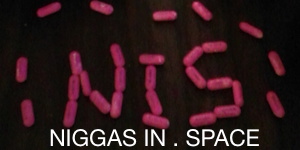

User Controls
Math question
-
2018-04-13 at 8:59 PM UTCBecause I am curious. Say someone has a certain quantity of candy, 1 lb. The candy pieces all have different amounts of sugar, and the distribution of their sweetness follows a Gaussian distribution. What would be the minimum amount of candy needed, so that if you were to take that amount of candy and blend it together and made new candies, to get new candies that are about as sweet as the total average of sweetness in the whole batch of candy?
-
2018-04-14 at 2:50 AM UTC*bup*
-
2018-04-14 at 2:51 AM UTC@sploo @lanny
-
2018-04-14 at 2:54 AM UTCI'm just gonna say probably about 62°-68% and see if I'm close. ThanmsThe following users say it would be alright if the author of this post didn't die in a fire!
-
2018-04-14 at 3:36 AM UTCI would still end up Diabetic.
-
2018-04-14 at 3:39 AM UTC
-
2018-04-14 at 4:11 AM UTC
-
2018-04-14 at 4:22 AM UTC5
-
2018-04-14 at 4:28 AM UTC
Originally posted by greenplastic Because I am curious. Say someone has a certain quantity of candy, 1 lb. The candy pieces all have different amounts of sugar, and the distribution of their sweetness follows a Gaussian distribution. What would be the minimum amount of candy needed, so that if you were to take that amount of candy and blend it together and made new candies, to get new candies that are about as sweet as the total average of sweetness in the whole batch of candy?
this doesnt have an answer because "about as sweet" is arbitrary
when i was doing correlation work the data started to average out around n=10
or you could just crush all of the candy together then stir it, then every portion will be about equal sweetness -
2018-04-14 at 4:38 AM UTC
Originally posted by roglahonz blaj this doesnt have an answer because "about as sweet" is arbitrary
when i was doing correlation work the data started to average out around n=10
or you could just crush all of the candy together then stir it, then every portion will be about equal sweetness
I just didn't specify exactly how close it had to be because I don't have a real reason to, but that doesn't mean nothing can be said about how many you would need to get an accurate result.
And I mean yea but I didn't even mention any number of candies there were, I just meant by weight. -
2018-04-14 at 7:26 AM UTCeven then its all up to probability, meaning the results cannot be accurately predicted
https://en.wikipedia.org/wiki/Law_of_large_numbers
basically you're asking which number is properly "large", and the answer is theres no way to determine this, but trends tend to even out over time, and there's probably a logarithmic function to determine accuracy based on a bell curve, but i cant say for sure -
2018-04-14 at 11:17 AM UTC
Originally posted by roglahonz blaj even then its all up to probability, meaning the results cannot be accurately predicted
https://en.wikipedia.org/wiki/Law_of_large_numbers
basically you're asking which number is properly "large", and the answer is theres no way to determine this, but trends tend to even out over time, and there's probably a logarithmic function to determine accuracy based on a bell curve, but i cant say for sure
sources, kick the stool. -
2018-04-14 at 1:10 PM UTC
-
2018-04-18 at 2:23 AM UTCAn actual number depends on the parameters of the original distribution and what "about as sweet" means. There's always a possibility that your sample (candy picked to be combined) mean deviates from population mean but it goes down as sample size increases. If you take "about as sweet" to mean "within one standard deviation of the original mean" you would expect about 1-.32^n of samples of would be "not about as sweet" as the population mean.
-
2018-04-18 at 5:34 PM UTC
Originally posted by Lanny An actual number depends on the parameters of the original distribution and what "about as sweet" means. There's always a possibility that your sample (candy picked to be combined) mean deviates from population mean but it goes down as sample size increases. If you take "about as sweet" to mean "within one standard deviation of the original mean" you would expect about 1-.32^n of samples of would be "not about as sweet" as the population mean.
shut the fuck up retard -
2018-04-18 at 5:35 PM UTC
Originally posted by Lanny An actual number depends on the parameters of the original distribution and what "about as sweet" means. There's always a possibility that your sample (candy picked to be combined) mean deviates from population mean but it goes down as sample size increases. If you take "about as sweet" to mean "within one standard deviation of the original mean" you would expect about 1-.32^n of samples of would be "not about as sweet" as the population mean.
2 plus 2 is 4 minus 1 that's 3 quick mafs -
2018-04-19 at 1:24 AM UTC
Originally posted by roglahonz blaj shut the fuck up retard
You don't get to call people retards when you wrote this unironically:
Originally posted by roglahonz blaj even then its all up to probability, meaning the results cannot be accurately predicted
https://en.wikipedia.org/wiki/Law_of_large_numbers
basically you're asking which number is properly "large", and the answer is theres no way to determine this, but trends tend to even out over time, and there's probably a logarithmic function to determine accuracy based on a bell curve, but i cant say for sureThe following users say it would be alright if the author of this post didn't die in a fire! -
2018-04-20 at 4:07 AM UTC
-
2018-04-20 at 5:41 AM UTC"even then its all up to probability, meaning the results cannot be accurately predicted"
--sploo, 2018 -
2018-04-20 at 5:47 AM UTC>probability
>accurate